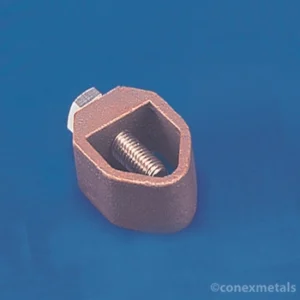Zinc Pipe Clamps
Zinc Pipe Clamps

| Dimensions | |||||
|---|---|---|---|---|---|
| Trade Size | A (in) | B (in) | C(in) | D(in) | Wire Range |
| 1/2", 3/4" to 1" | 2.19 | 0.50 | 0.81 | 0.56 | #8-#2 |
Zinc pipe clamps are specialized fittings used to secure and support pipes in various applications, such as plumbing, HVAC (Heating, Ventilation, and Air Conditioning), and industrial systems. These clamps are designed to hold pipes in place and prevent movement or vibration.
Key features and uses of Zinc pipe clamps include:
- Material: Zinc pipe clamps are typically made from Zinc-plated Steel, which provides good corrosion resistance and durability.
- Design: They come in various designs, such as split clamps, hinged clamps, cushioned clamps, or heavy-duty clamps, to suit different pipe sizes and installation requirements.
- Pipe Size: Zinc pipe clamps are available in different sizes to accommodate various pipe diameters, ranging from small plumbing pipes to larger industrial pipelines.
- Installation: Zinc pipe clamps are easy to install and secure to supporting structures, such as walls, ceilings, or beams, using screws, bolts, or other appropriate fasteners.
- Pipe Support: The primary function of Zinc pipe clamps is to support and hold pipes firmly in place, preventing sagging or movement due to the weight of the pipes or the flow of fluids within them.
- Vibration Damping: In some applications, cushioned or rubber-lined Zinc pipe clamps are used to dampen vibrations and reduce noise caused by fluid flow or machinery.
- Temperature Tolerance: Zinc pipe clamps are designed to withstand a wide range of temperatures, making them suitable for both indoor and outdoor applications.
- Plumbing and HVAC: Zinc pipe clamps are commonly used in plumbing systems for water supply and drainage pipes, as well as in HVAC systems for ductwork and refrigerant lines.
While Zinc pipe clamps offer good corrosion resistance, they may not be suitable for all environments. In highly corrosive or aggressive environments, Stainless Steel or other corrosion-resistant materials may be preferred.





